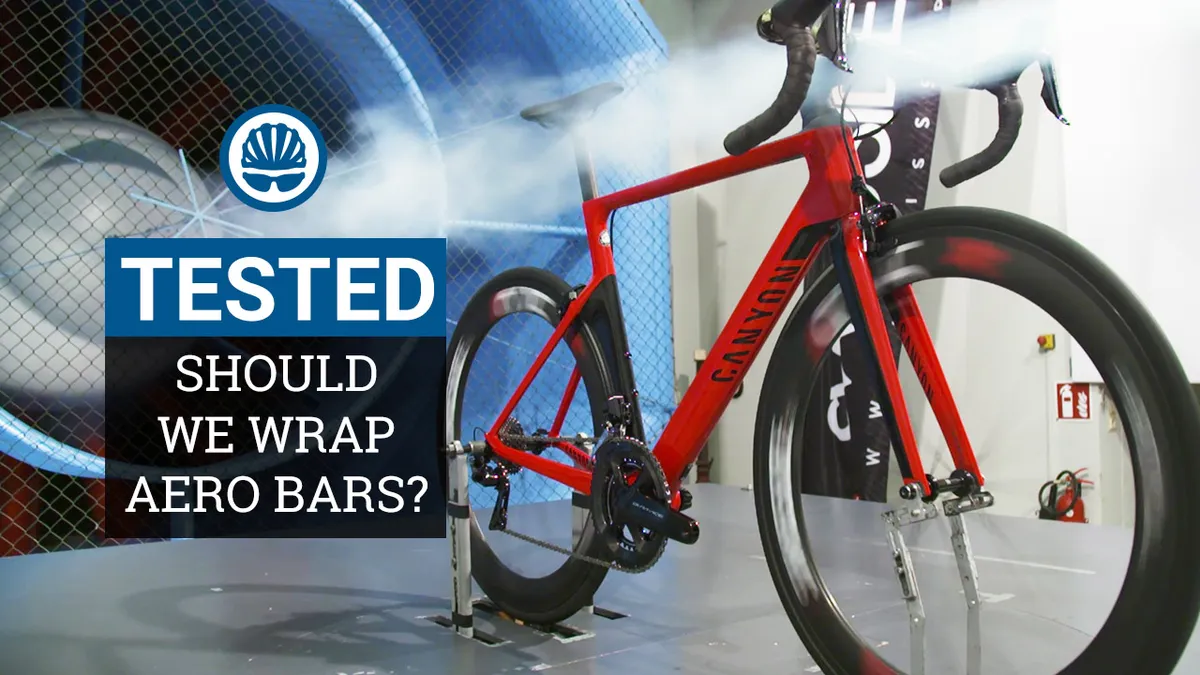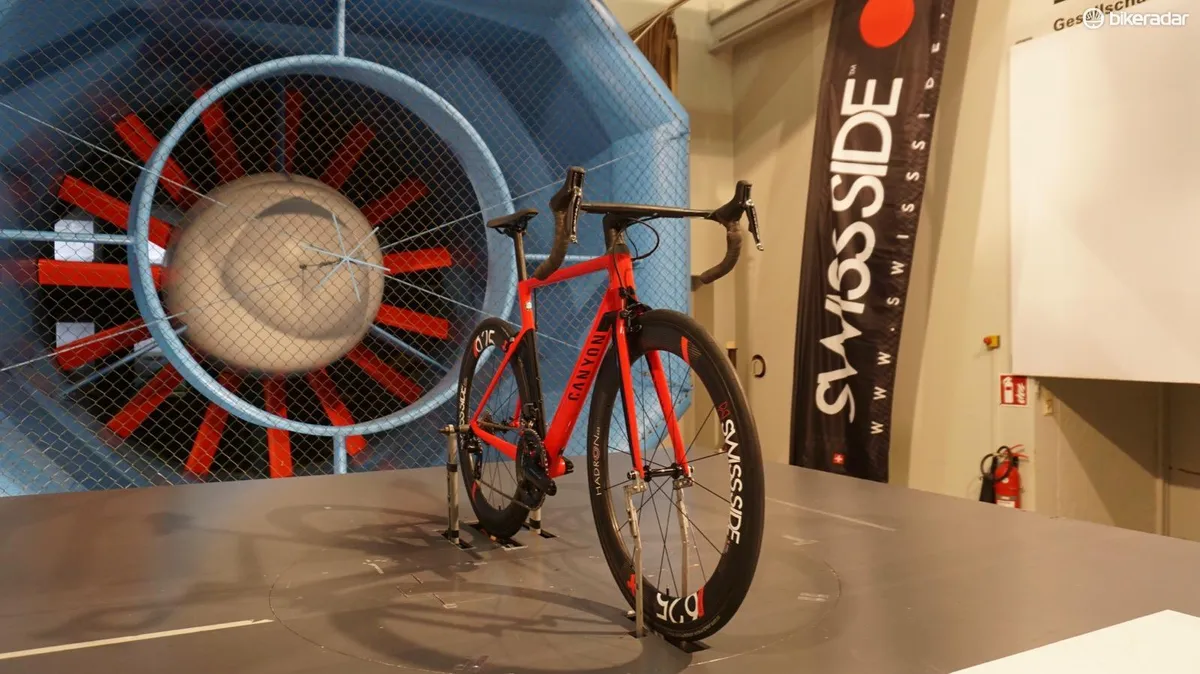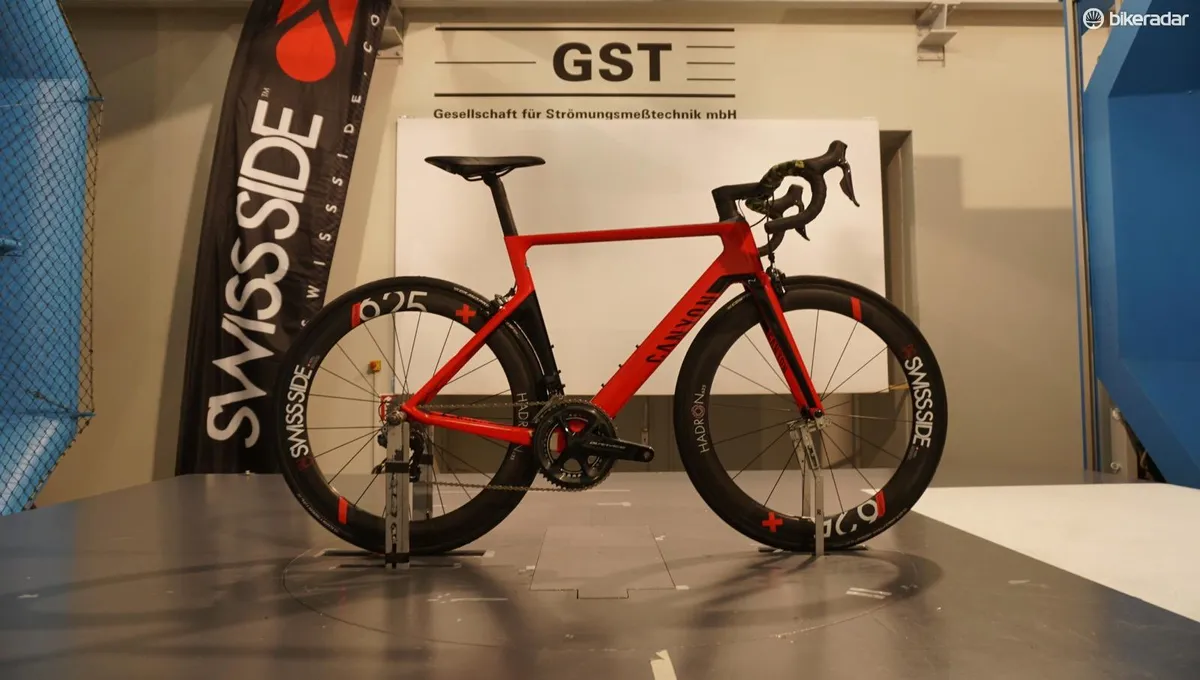On a road bike, you spend most of your pedaling energy just pushing through the wind. The smaller and the more aerodynamic shape you present to the wind, the easier it is and the faster you go. The size and curvature of a bike’s leading edges are especially crucial to aerodynamics.
- How to ruin an aero road helmet (don't do this!)
- 10 of the best deep aero wheels lab tested
- DT Swiss collaborates with Swiss Side for ARC aero wheels
Now, if we were machines and not humans, the situation would be easy: make everything as flat, low and slender as possible. But as elegant and aerodynamically slippery as bikes can be, we still have to ride them.
Recently, bike and component makers have found relatively huge speed gains with sculpted aero road bars and integrated stems.
Using teardrop or truncated airfoil shapes, these bars afford a four- to five- watt reduction in drag, according to many companies, when compared to a round bar.
But instead of being wrapping with padded bar tape, like a normal bar, aero road bars are designed to be used with bare tops.
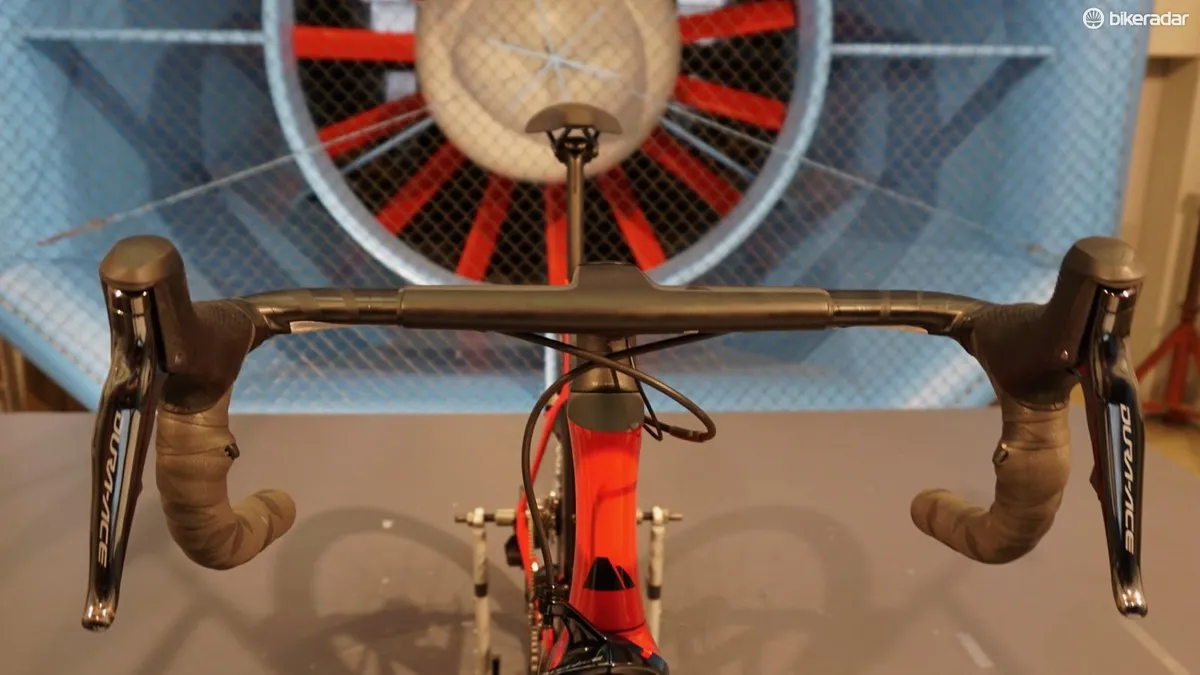
While slippery in the wind, the bare tops can also be slippery in the hands. Many pro racers just tape them normally. For example, fully wrapped aero bars didn’t seem to slow down Marcel Kittel as he won five stages at this year’s Tour de France.
So how much does this compromise speed, if at all? I asked few companies, such as Giant and Scott, which have just launched new aero road disc bikes with unwrapped aero bars. They said they did not know; they did not test this.
So, we went to the GST wind tunnel in Germany as guests of SwissSide to find out.
Watch our video to see our testing in action
Testing methodology and results
Jean-Paul Ballard and his fellow Swiss Side co-founders are former Formula 1 engineers, so we left the testing methodology and execution to them. They tested at 45kph across a weighted yaw range of +20 to -20.
They found that, for the Canyon Aeroad we used with Swiss Side HADRON Ultimate 625 wheels, removing the top section of the handlebar saved 0.7 watts, and taping the bar all the way up to near the stem added 0.7 watts. So, you could save about 1.5 watts by going fully bare up top.
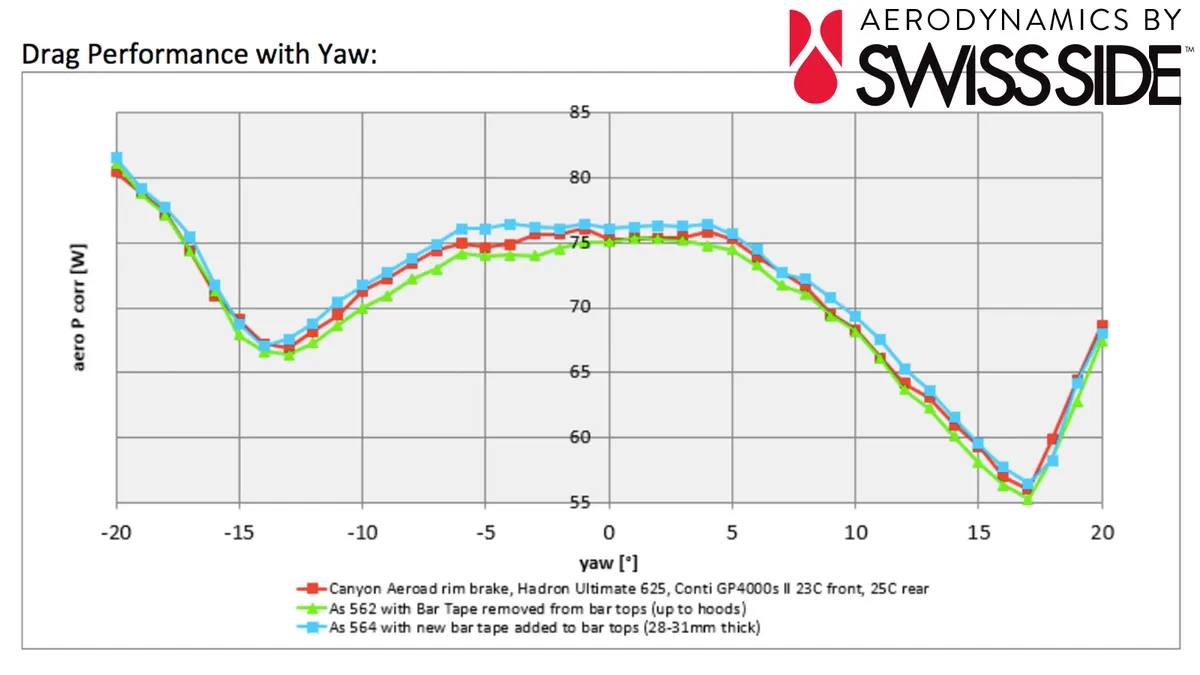
We did not test a round bar versus an aero bar, but it's safe to say based on multiple tests by others that can be a 4–5w saving.
For reference, a bike ranges from 70–100w at 45kph using the same weighted yaw sweep. And, of course, you, the rider, contribute about 75 percent of the total drag.
A caveat: different aero road bars, like different aero road bikes, will perform differently. The Canyon Aeroad's integrated bar is a milder aero shape, opted for for some ergonomics as well as aerodynamics. Other bars, such as Cervelo's, are more dramatic, and could produce other drag numbers when tested with and without bar tape on the tops.
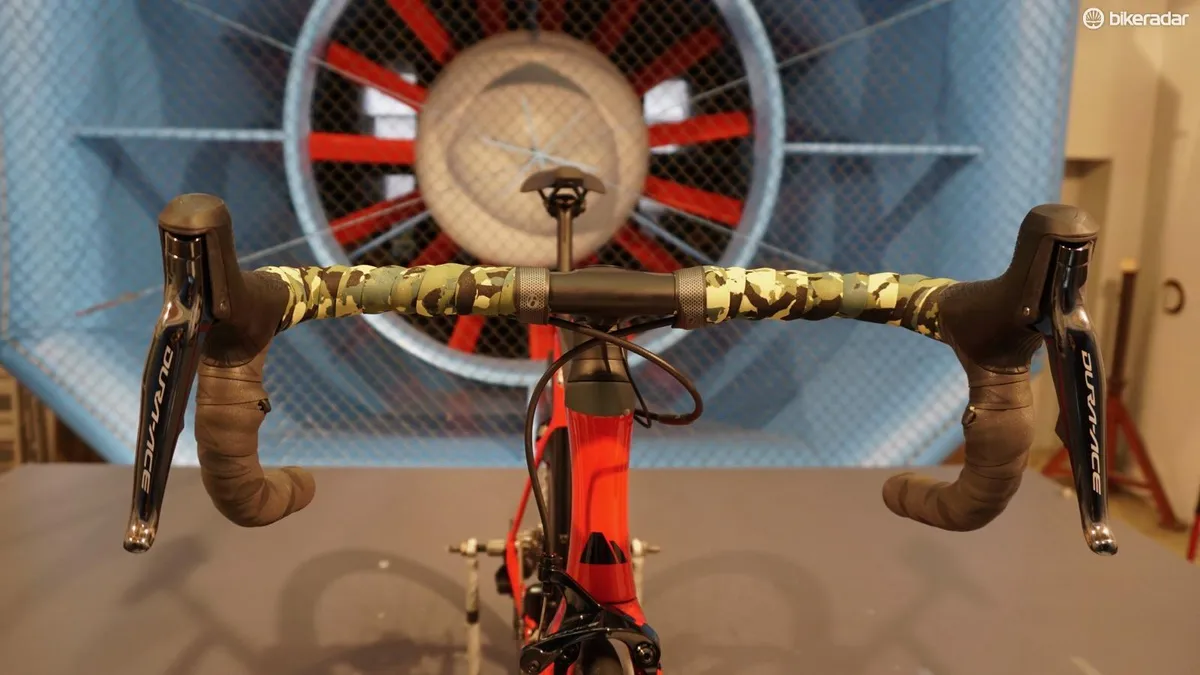
The takeaway — what you should do
As always, you can do whatever you want — it’s your bike.
Before you buy an aero road bar, pay attention to where you normally put your hands when riding. If you ride on the hoods and the drops and are almost never on the tops, then going to an aero bar with bare tops could be a great way to make real gains. Conversely, if you are always on the tops, then make sure that spot is comfortable for you.
For the record, aero bars don’t have to be uncomfortable on the tops. Sure, some have sharp edges — looking at you, Scott Foil integrated bar — but many, like some of 3T's designs, I find more comfortable than some round bars because the flat area spreads out the pressure across the palms and the back edge is curved.
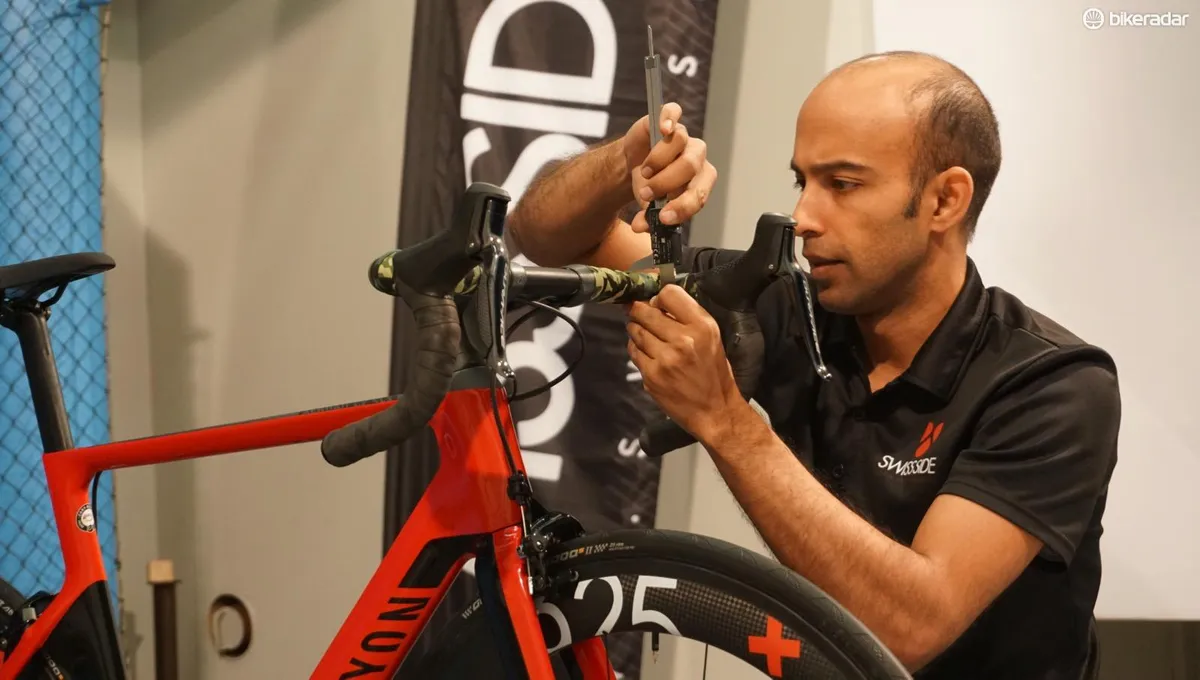
Handlebar tape isn't just about padding; it's also about grip. Again, pay attention to how you ride; if you are the type of rider who does the praying mantis or 'invisible aero bars' position with forearms on the tops and hands suspended out front, then a bare aero bar could be straight-up dangerous.
I would encourage you to treat your bar like the other contact points of saddle and shoes — find a shape that really works for you. Comfort is key.
The same goes for bar tape. There is a huge array of thicknesses and textures out there. Why not try a couple of different styles, and, if you already have an aero road bar, experiment with wrapping it fully versus leaving the tops bare? If nothing else, new bar tape always makes a bike look better.
